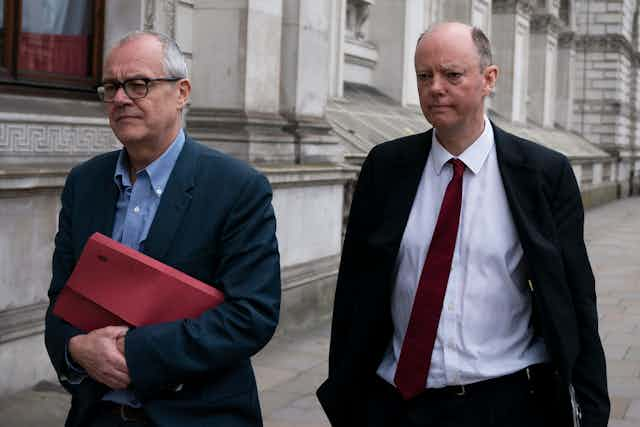The global coronavirus pandemic has prompted a wide range of responses by governments around the world. China has instituted severe lockdowns, which South Korea has avoided in favour of widespread testing and surveillance, while Sweden has pursued a much more relaxed approach altogether.
The UK has pursued a strategy guided heavily by disease modelling of using social distancing to slow the spread of the virus and stop the health service being overwhelmed, while waiting for the development of a vaccine or natural herd immunity. But the UK government has also been severely criticised by public health experts who want much greater testing to identify and isolate patients in the hope of eradicating the virus.
How can the experts be so profoundly at odds? My research on public policy focuses on how different beliefs about cause and effect lead to different narratives about a situation, and how these can lead policymakers to make different decisions. This suggests that one informed viewpoint isn’t necessarily better than another, but that all expert opinions need be listened to, and at the right time, in order for effective decision-making to take place.
The COVID-19 pandemic has highlighted just how many ways that scientists and other academic experts can disagree. The disease was first spotted by epidemiologists who identified a Sars-like virus that appeared to have emerged from live animals held in a “wet market”. These markets are still the subject of much scrutiny. But other scientists have since argued that the virus probably began elsewhere, as data suggests many of the first patients probably caught the disease before people in the market were infected.
Disease experts also appear to differ on exactly what measures are needed to tackle the virus. Despite a sophisticated system for gathering scientific advice, the UK government was initially criticised by hundreds of scientists for not enforcing sufficient social distancing. New modelling data convinced the government’s chief scientific adviser, Sir Patrick Vallance, and chief medical officer, Chris Whitty, to recommend changing tactics and moving to a lockdown.
But some public health specialists are still arguing that the overall strategy being pursued by the UK and some other countries of trying to suppress rather than eliminate the virus is wrong. The World Health Organization contends that we need more focus on testing, and on securing global supply chains, personal protective equipment (PPE) and human resources.
In complete contrast, Sweden’s state epidemiologist has expressed scepticism with regard to lockdowns. We even have pathologists saying the level of threat of the virus may have been overestimated.

What’s going on here, and why the stark difference of opinion? This is more than just people not sharing the same worldviews. The problem may instead lie in the interpretation of what counts as fact. Experts in different fields tend to hold different beliefs about cause and effect and draw on different sources of evidence in support of their various claims.
Studying the narratives that emerge from these different beliefs can give us direct insight into how experts make decisions. For example, some studies have suggested there may be a small link between living near high-voltage power lines and certain health risks, but the evidence is limited and doesn’t explain why this may be. When this link first emerged, what seemed like scientific ambiguity led some experts to frame the issue as a “public health emergency”. Meanwhile others spoke more of a “growing public apprehension” or were waiting until more evidence arrived.
We can see how such competing interpretations have formed around the COVID-19 debate. In an attempt to account for what they don’t know about the virus, mathematical modellers have had to make certain assumptions, such as that it behaves in certain similar ways to influenza. This affects what measures some models examine and appear to show will be more effective in combating COVID-19. And it can affect the beliefs of those who place high importance on the models that we need to slow the virus’s spread, rather than trying to stamp it out with mass testing until the epidemic is on the way out.
Meanwhile, the calls from public health experts for much greater testing, patient isolation and contact tracing appear rooted in beliefs that the virus is not anything like influenza. And so they argue our primary goal should be to protect people from this unknown threat by trying to eliminate it and “test, test, test” to identify those who need isolating.
To act or not to act?
These competing narratives show us how differently experts can interpret facts because of beliefs about cause and effect that they take for granted, and how different moral claims can lead to very different decisions. It’s an issue that governments repeatedly have to grapple with, determining not just how to act but whether to act at all.
Studying these narratives, known in policy studies as “discourse”, helps us to reveal where apparent scientific ambiguity can be better explained as differences of professional opinion, deeply rooted in beliefs about what works. By taking greater notice of the narratives that are circulating, we can gain greater insight into the beliefs that underpin why certain decisions might be made in practice.
This can also help us spot when particular types of expertise might be missing. For instance, some of disease models don’t consider how age and behaviour might affect predictions. This underlines why it’s so important not to limit the range of voices in policy making, as doing so can ultimately undermine the legitimacy of the decision.

